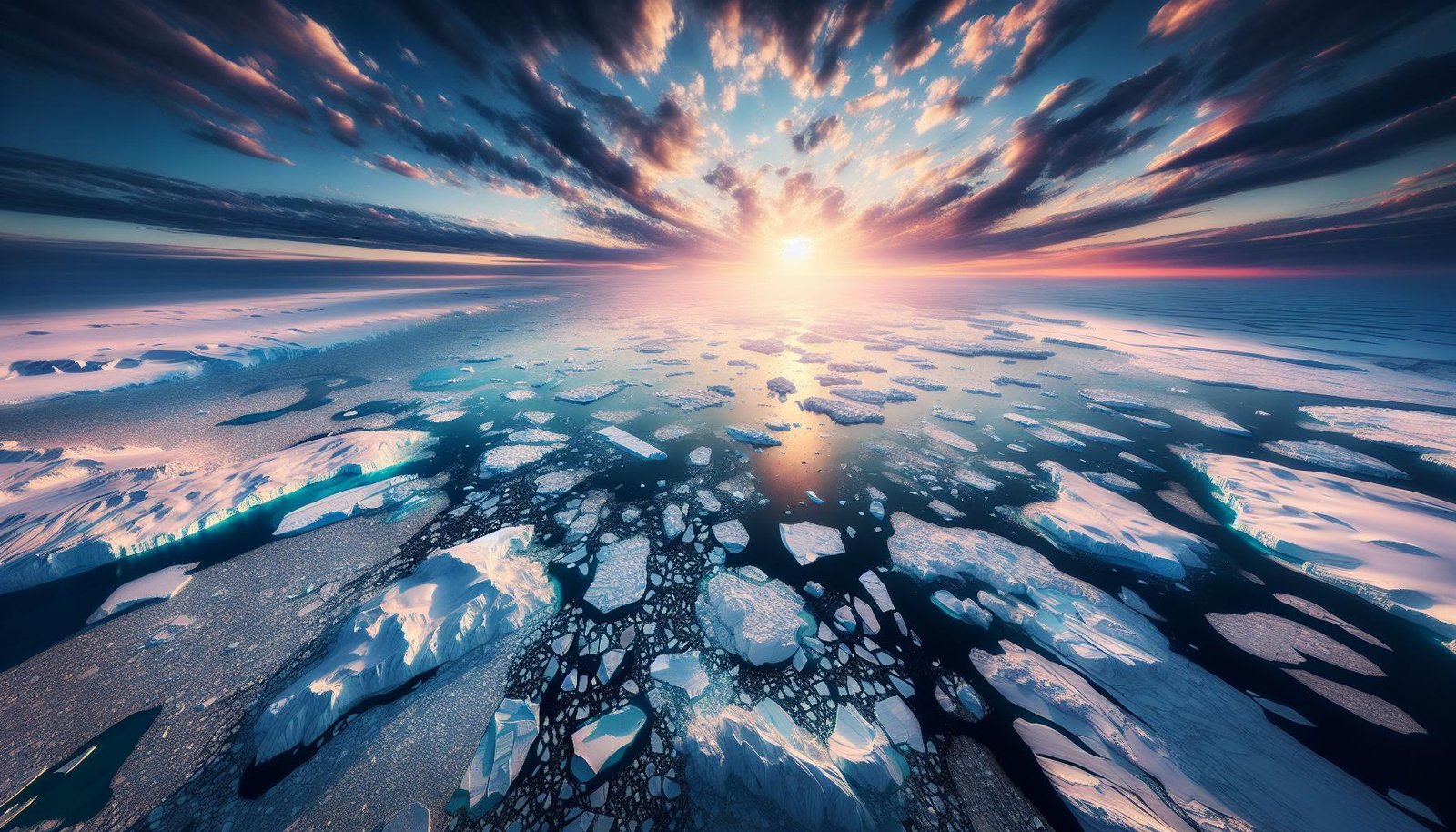
In one of the most remote and pristine regions on our planet, a silent crisis is brewing—the ice at the top of the world is melting. The Arctic, often referred to as the Earth’s air conditioner, is experiencing unprecedented changes. This melting is not just a distant problem; it affects ecosystems, weather patterns, and even sea levels across the globe. Today, we explore the unfolding ‘Meltdown at the Top of the World’ and its far-reaching implications, as well as the potential solutions to combat this pressing issue.
Understanding the Arctic Meltdown
The Arctic is warming at least twice as fast as the global average, a phenomenon often referred to as Arctic amplification. The principal culprit of this rapid warming is human-induced greenhouse gases that trap heat in the Earth’s atmosphere. The loss of polar ice isn’t just an aesthetic loss; it plays a vital role in regulating global climate by reflecting sunlight back into space, a process known as the albedo effect. As ice melts, darker ocean surfaces absorb more heat, creating a feedback loop that accelerates warming. NASA provides a deep dive into this complex feedback mechanism.
Environmental and Sustainability News: The Ripple Effect
The melting of the Arctic ice has significant ripple effects worldwide. As ice sheets continue to shrink, sea levels rise, which poses a threat to coastal communities around the globe. This isn’t just a threat to wildlife habitats but a looming danger to human settlements. The National Snow and Ice Data Center has tracked changes in Arctic ice and provides insights into the alarming rates of ice loss.
Moreover, climate changes in the Arctic lead to more extreme weather patterns. The warming Arctic can alter the jet stream—a high altitude wind current—which affects weather systems globally. This disruption can lead to prolonged droughts, flooding, and other extreme weather events as reported by the UK Met Office. Understanding these patterns is crucial in preparing for and mitigating impacts from these changes.
Political and Social Issue Reporting: Policy and Perspective
Environmental policies are crucial in addressing the Arctic meltdown. Nations worldwide need to collaborate on climate agreements such as the Paris Agreement to set actionable targets for reducing carbon emissions. Each country’s participation varies, with some taking aggressive steps towards sustainability while others lag behind, sparking a debate on political willingness versus necessity. The European Union, for instance, has set ambitious carbon-neutral goals, while the United States fluctuates due to political leadership changes.
Social and environmental activists are pivotal in pushing for change. Movements like Fridays for Future, started by Swedish activist Greta Thunberg, have brought these issues to the forefront, demanding stronger action from world leaders. These social campaigns are essential in keeping momentum towards meaningful global climate policy. More can be learned about these movements on the Fridays for Future website.
Scientific and Technological Reporting: Innovation and Hope
As the world grapples with climate change, scientific and technological advancements offer hope. Innovations in renewable energy are growing rapidly, with solar and wind energy production leading the way in sustainable alternatives. Battery storage technology, essential for utilizing renewable energy efficiently, has seen significant improvements, as noted by Nature.
Moreover, technology is enhancing our ability to study and understand these changes in the Arctic, leading to better predictive models. Satellite imagery and AI-powered data analytics are revolutionizing how we monitor our planet’s most remote regions, offering real-time data crucial for research and policy. The European Space Agency’s Sentinel satellites are a testament to this technological leap.
Cultural and Lifestyle Topics: A Green Revolution
The Arctic meltdown is influencing various cultural and lifestyle shifts towards sustainability. Communities worldwide are embracing sustainable living approaches, such as reducing waste, opting for public transportation, and supporting eco-friendly products. Lifestyle changes, though small on an individual scale, collectively create significant impacts in reducing carbon footprints.
Fashion, food, and travel sectors are seeing a shift to greener practices. Brands are now prioritizing sustainability, and sustainable tourism is gaining attention with travelers choosing eco-conscious destinations. Personal stories of individuals and communities adopting sustainable practices can be found at Sustainable Jungle.
Health, Wellness, and Environmental Impact: Balancing Act
The links between health and environment are undeniable. As air quality diminishes due to melting ice and resultant feedback loops, respiratory illnesses become more prevalent. Improving air quality is essential for reducing these health risks, as reported by the World Health Organization. Furthermore, the well-being benefits of access to green spaces are increasingly recognized, emphasizing the need for sustainable urban planning.
Investing in green spaces not only contributes to health and wellness but also aids in carbon sequestration, an essential process in mitigating climate change effects. Studies have shown that urban greenery is vital for mental health, offering respite from urban life’s stresses, thus showcasing another critical intersection of environmental and personal well-being.
The Arctic meltdown is a bellwether of the broader climate changes affecting our planet. Though daunting, understanding these changes highlights the urgency for immediate action and the potential solutions available through innovation, policy, and personal change. As we continue to explore and address these challenges, each step forward embodies hope and commitment to ensuring a sustainable and secure planet for future generations.
The post Meltdown at the Top of the World: Understanding the Arctic Crisis and Its Global Impact appeared first on Green.org.














